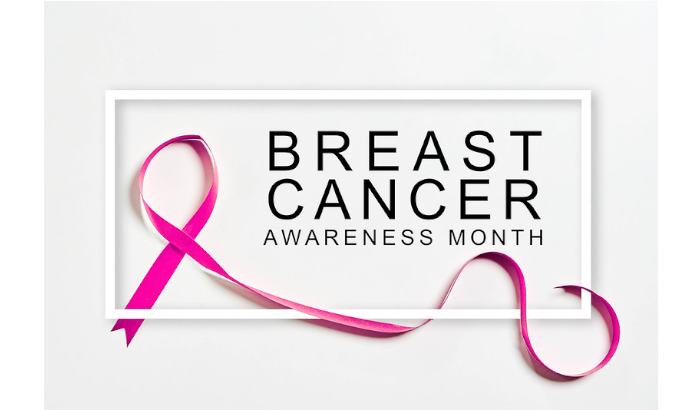Here it is again! October, breast cancer awareness month, also known as “breast cancer industry month.” With it comes a cacophony of pink splashed everywhere with pink ribbons emblazoned on all products imaginable.
The pinking of America gets more invasive each year. You have baseball bats in pink, footballs decorated with pink ribbons and landmarks from the White House to the Eiffel tower, bathed in pink light. There are consumer products marked with pink ribbons with vague promises that proceeds fund breast cancer research. You can buy pink alcoholic lemonade, or pink vibrators which promise “Sensuality, Sexuality, Survival.” There are pink rosary beads, pink guns, and even pink hearses and ambulances.
The pink ribbon is instantly recognized as a symbol for breast cancer. While often used to suggest a company’s commitment to donating to breast cancer awareness, the pink ribbon can be used to sell or promote anything, regardless of any financial contribution to breast cancer research.
All this in the name of “cause marketing,” a partnership between nonprofit and for-profit organizations for mutual benefit. The nonprofit’s, benefit comes in the form or greater recognition, added resources, and donations. The for-profit’s, benefit is a greater positive reputation and increased sales. Each is riding on the other’s coat tails. Cause marketing is a channel to that mutually beneficial exchange.
From all this marketing attention, the casual observer may think this forebodes well, that it indicates we are making a significant headway with breast cancer. This attention is misleading.
Most often the focus is on the search for the “magic bullet,” – the cure for cancer. Instead, we need to give attention to other more significant aspects such as public health and prevention, including environmental issues and toxins.
We need innovative research that enhances knowledge and understanding of not just the diagnosis and treatment of breast cancer, but its prevention and causes, including nutritional environmental and genetic contributions.
We know that 30-50% of breast cancer cases involve one or more of the following risk factors:
- Family history: heredity accounts for 10% of cases, at most
- Early menarche (before age 11) or a late menopause (after age 51)
- Bearing children later in life (after age 35) or no childbirth
- Hormone replacement therapy
- Alcohol consumption
- Ionizing radiation: X-rays, mammograms, nuclear power plants
But, how do we explain the other 50 to 70% of breast cancer cases?
- Of the more than 100,000 chemicals in commercial use in the US today, more than 90% have never been tested to determine their effects on human health.
- The use of terms such as “natural,” “safe,” and “nonionic” in product labeling is not adequately regulated in the US. The US Federal Trade Commission has created some guidelines for environmental marketing, but these are rarely enforced.
- Synthetic chemicals that mimic estrogen in our bodies, and have been shown to increase women’s risk of breast cancer. These chemicals are found in many places in our environment: personal care products and cosmetics (parabens), weed killers that make their way to water sources (atrazine), food preservatives (butylated hydroxyanisole), and baby bottles, plastic containers and plastic toys (phthalates).
All this speaks to the complexity of a disease which this year will kill 44,000 women in the United States and more than 182,000 women will be diagnosed with breast cancer.
This is not only a problem of developed countries. Until recently, breast cancer was thought of as a major issue primarily in developed countries. But, in a global review of breast cancer, researchers at the University of Washington estimated the number of new international breast cancer cases rose from about 641,000 cases in 1980 to 1.6 million cases, killing 425,000 women each year.
The politics of breast cancer percolates in all levels of society. With most attention geared to early detection, the focus is then on treatment modalities. Other facets such as causes, risk factors and prevention get a short shrift in attention and dollars spent on breast cancer. The cancer industry is made up of corporations, organizations, and agencies that diminish and mask the extent of the problem, that fail to protect our health, or divert attention away from the importance of finding ways to prevent the disease. This leads to conflicts of interest that prevent vital information about breast cancer from reaching the public.
The politics of breast cancer includes organizations that promote awareness of breast cancer through the use of pink ribbons but which actually may contribute to the causes of breast cancer.
A major fried chicken conglomerate advertised its financial contribution to breast cancer awareness for every bucket of chicken sold. Fried foods are a nutritional factor in the causality of breast cancer.
Products focused directly to and for women also contribute to the politics of breast cancer. Perfume contains multiple chemicals categorized as toxic or hazardous. These chemicals have not been adequately evaluated for human safety, and have demonstrated negative health effects.
Other chemicals of primary concern include:
- Galaxolide, a synthetic musk that works as a hormone disruptor and is detected in blood,
breast milk, and even newborns. - Toluene, a potent nerve toxin, has demonstrated a variety of negative health effects and is banned by the International Fragrance Association (IFRA).
The politics of breast cancer contribute to the confusing conundrum of women’s health where women must deal with conflicting and contradictory information. Not only should women have access to information that will empower them to make appropriate decisions for themselves, but research needs to exert itself to ensure that the best and most accurate information is available.
A woman’s lifetime risk of breast cancer increased steadily and dramatically from the 1930s, when the first reliable cancer incidence data was established, through the end of the twentieth century. Since 1973 breast cancer rates in the United States have increased by more than 40%.
The fact that women are dying of breast cancer at the same rate today as they were in 1930 demands that we explore new perspectives. We need to look into every aspect of breast cancer-prevention, basic causes, and new methods of diagnosis and new treatments. We need to figure out what’s behind the unexplained increases of breast cancer, not just look at how to treat it after it is detected.
We need to pose these critical questions:
- How do toxins in our daily lives influence breast cancer?
- What is the relationship between environmental exposures and breast cancer?
- What factors tend to protect Asian women from breast cancer in their country of origin?
- What goes wrong with genes in healthy cells to trigger breast cancer?
- How do we prevent breast cancer?
The answers to these questions involve political and policy responses, involving all of society, not just women, health care providers or health care researchers. To answer these questions is to change the conversation and advocate for a transformation in thinking that is necessary to alter the breast cancer epidemic.
We must seek health justice for women.
Catherine DeLorey is president of the Women’s Health Institute.





